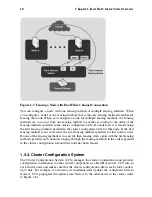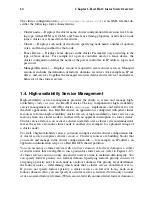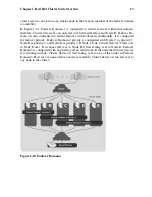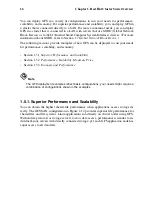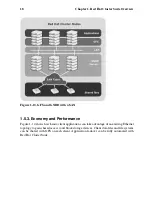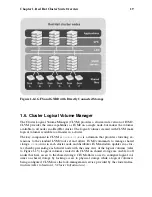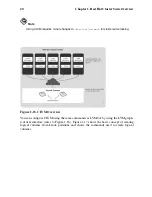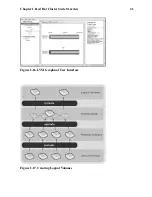
24
Chapter 1. Red Hat Cluster Suite Overview
router via both the public and private network interfaces to shut down the
lvs
daemon
on the active LVS router, and starts the
lvs
daemon on the backup LVS router to accept
requests for the configured virtual servers.
To an outside user accessing a hosted service (such as a website or database application),
LVS appears as one server. However, the user is actually accessing real servers behind the
LVS routers.
Because there is no built-in component in LVS to share the data among real servers, you
have have two basic options:
•
Synchronize the data across the real servers.
•
Add a third layer to the topology for shared data access.
The first option is preferred for servers that do not allow large numbers of users to upload
or change data on the real servers. If the real servers allow large numbers of users to modify
data, such as an e-commerce website, adding a third layer is preferable.
There are many ways to synchronize data among real servers. For example, you can use
shell scripts to post updated web pages to the real servers simultaneously. Also, you can use
programs such as
rsync
to replicate changed data across all nodes at a set interval. How-
ever, in environments where users frequently upload files or issue database transactions,
using scripts or the
rsync
command for data synchronization does not function optimally.
Therefore, for real servers with a high amount of uploads, database transactions, or similar
traffic, a
three-tiered topology
is more appropriate for data synchronization.
1.8.1. Two-Tier LVS Topology
Figure 1-20 shows a simple LVS configuration consisting of two tiers: LVS routers and
real servers. The LVS-router tier consists of one active LVS router and one backup LVS
router. The real-server tier consists of real servers connected to the private network. Each
LVS router has two network interfaces: one connected to a public network (Internet) and
one connected to a private network. A network interface connected to each network al-
lows the LVS routers to regulate traffic between clients on the public network and the real
servers on the private network. In Figure 1-20, the active LVS router uses
Network Address
Translation
(
NAT
) to direct traffic from the public network to real servers on the private
network, which in turn provide services as requested. The real servers pass all public traffic
through the active LVS router. From the perspective of clients on the public network, the
LVS router appears as one entity.
Summary of Contents for CLUSTER SUITE - FOR RHEL 4
Page 1: ...Red Hat Cluster Suite for RHEL 4 Overview ...
Page 4: ......
Page 10: ...vi About This Document ...
Page 47: ...Chapter 1 Red Hat Cluster Suite Overview 37 Figure 1 25 Cluster Configuration Structure ...
Page 62: ...52 Chapter 1 Red Hat Cluster Suite Overview ...
Page 72: ...62 Chapter 2 Red Hat Cluster Suite Component Summary ...

